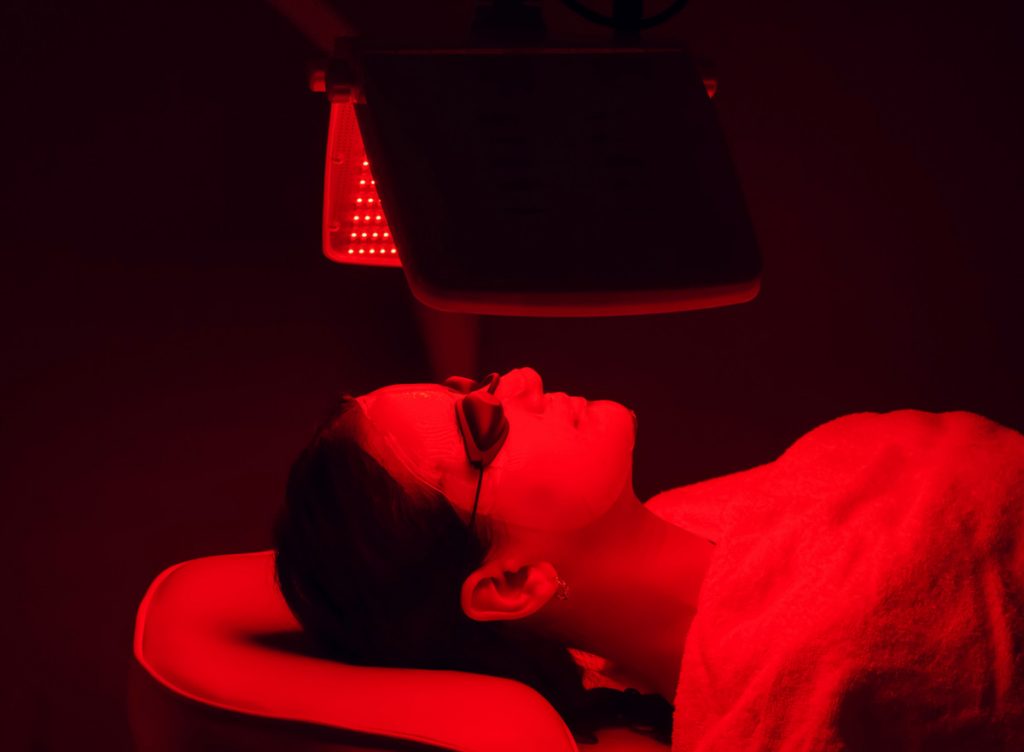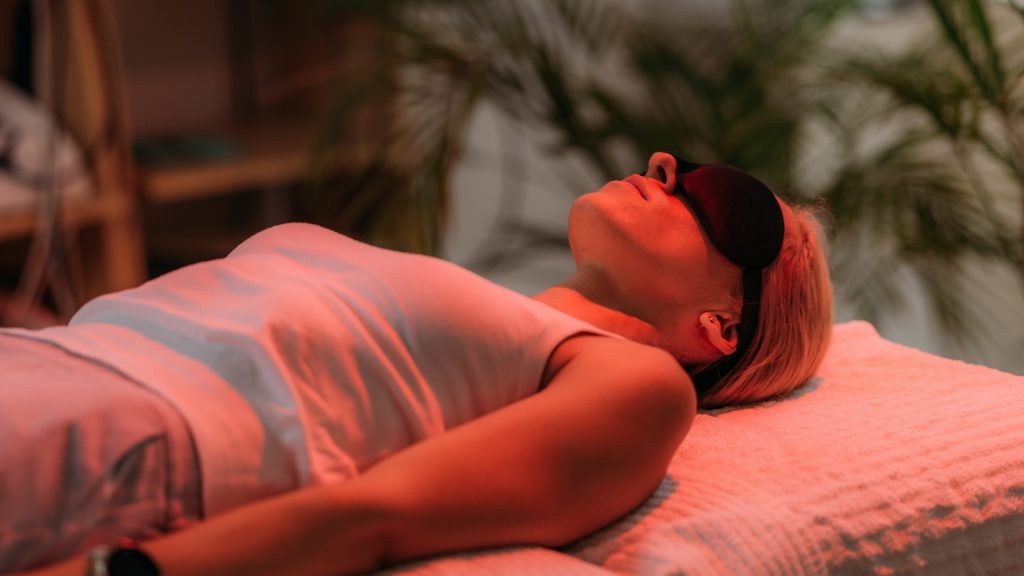Are you interested in knowing more about red light therapy and its benefits? Red light therapy is a conventional therapy that’s often used alongside conventional treatments. The method uses low-level wavelengths of red light for treating skin and other conditions. But what is red light therapy good for? Does it help with wrinkles and acne, or is its usage completely different?
If you were attracted by the internet buzz around this type of therapy, stick around to find out more.

Source: slumberandsmile.com
What Is Red Light Therapy Good For
Red light therapy produces a biochemical effect in body cells, strengthening the mitochondria- the powerhouse of the cell. By enhancing mitochondria function, our cells can produce more ATP; hence, they have more energy.
With better power, cells can function more efficiently, repair damaged tissue, and rejuvenate themselves.
This means that red light therapy might stimulate the mitochondria to produce more ATP. What’s unique about red light therapy is that it doesn’t cause skin damage, unlike other laser and pulsed light therapies. Also, it may directly stimulate skin regeneration without any harsh steps.
After clearing up how red light therapy works, we can move on to the potential benefits of using it.
Wound healing and tissue repair
Studies show that red light therapy treatments have helped people heal wounds faster.
It is a natural way to lower the risks of side effects during the regenerative process. Peer-reviewed studies showed that red light therapy accelerated wound repair by reducing inflammation and stimulating tissue formation.
Other studies showed that red light therapy supports the healthy development of new blood vessels while stimulating the increase of fibroblasts, vital for tissue repair.
Hair growth
Research has found that red light therapy may also be effective at treating hair loss.
Red light in the 620n to 660nm wavelength spectrum seems to be the most beneficial for restoring hair. It works by increasing the blood flow in the scalp, stimulating hair follicle metabolism, which leads to heightened hair production.
Many factors can cause hair loss, but the follicles aren’t affected. Therefore, what red light does is it penetrates the base of hair follicles.
It stimulates the cells, papilla, and matrix to produce more energy so the cells are replicated successfully, leading to new hair growth.
May stimulate collagen production
Collagen makes up 70% of the dermis- the middle skin layer. It contributes to the elasticity and strength of your skin, but unfortunately, with time, your body starts producing less collagen.
Red light therapy is believed to stimulate collagen production successfully. Additionally, it also may stimulate fibroblast production, which further aids collagen and other tissue fibers production.
Despite stimulating collagen production, red light therapy may also protect the existing collagen.
May repair sun damage
Exposing your skin to excessive UV light can cause many types of skin damage. From sunburn and sun spots to wrinkles, skin condition like melasma, and actinic keratosis, prolonged sun exposure can cause a lot of damage.
The specific wavelengths used in red light therapy might activate the body’s natural healing process. They increase collagen and elastin production, which are vital for repairing sun damage. Red light therapy may also increase the body’s immune response to clear away dead skin cells and repair damaged ones.
Higher collagen levels help smooth and firm the skin, improving the appearance of fine lines and wrinkles.
Other potential red light therapy uses
Despite the many applications of red light therapy for cosmetic treatments, it is currently being researched for other medical uses, including reducing chemotherapy side effects, relieving pain and inflammation related to ankle tendonitis, rheumatoid arthritis, carpal tunnel syndrome, etc., and preventing cold sores caused by herpes simplex virus from recurring.

Source: healthnews.com
Unconfirmed Benefits of Red Light Therapy
After learning more about what is red light therapy good for, it’s time to reveal some other potential benefits that the public continues to talk about, even though there is no scientific evidence to back those claims.
Red light therapy has some excellent potential therapeutic benefits, but it isn’t a cure for everything. Therefore, you might encounter some exaggerated claims about red light therapy with little-to-no evidence. It may:
- Treat depression and seasonal affective disorder
- Activate the lymphatic system and detoxify the body
- Enhance the immune system, reduces cellulite
- Stimulate weight loss
- Treat back pain
- Cure acne
- Treat cancer
Red light therapy might be used in combination with other treatments to enhance the efficiency of another medication.
It is often used with cancer treatments to activate other medications, but when used alone, red light therapy cannot produce any positive outcomes on its own.
If you’re interested in using red light therapy for some of the above conditions, we suggest you consult your doctor.
Is Red Light Therapy Safe?
After learning about the potential benefits of red light therapy, it is time to answer the most important question: is it safe?
Generally speaking, red light therapy is considered to be safe and isn’t associated with any severe side effects. If you follow the directions for using the treatment and stick to the recommended length of the sessions, you shouldn’t experience any difficulties while using red light therapy.
The methodology is non-toxic, non-invasive, and milder than many topical skin treatments.
However, if red light therapy products are misused, they might cause damage. Extending the length of the session and exposing your skin or eyes to more red light than directed could damage them. To stay safe with red light therapy, you should consult a dermatologist or a qualified cosmetic therapist.
Seeing your dermatologist will help you understand your skin condition and give you a professional opinion about whether red light therapy is a good option.
Conclusion
So, what is red light therapy good for?
After carefully reviewing the more or less promising potential benefits of red light therapy, you now know a little more about the cosmetic treatment and what you can use it for.
However, before getting your hopes up, we recommend consulting a dermatologist or an experienced cosmetic therapist to help you understand whether red light therapy can target your problems.

Hello! I’m Nicky Rodgers.
Almost a decade ago, I got excited about the idea of employing alternative methods like red light therapy to create a healthier life.
To learn more about it, I did my Certified Light Therapist course from Photonic Therapy Institute and started looking into the intricacies of how light therapy influences several bodily processes. Before I knew it, my interest had become an obsession which resulted in this extensive blog.
Here, I offer countless well-researched articles to help you understand the benefits and uses of light therapy. I hope this information gives you a head start in your wellness journey.
